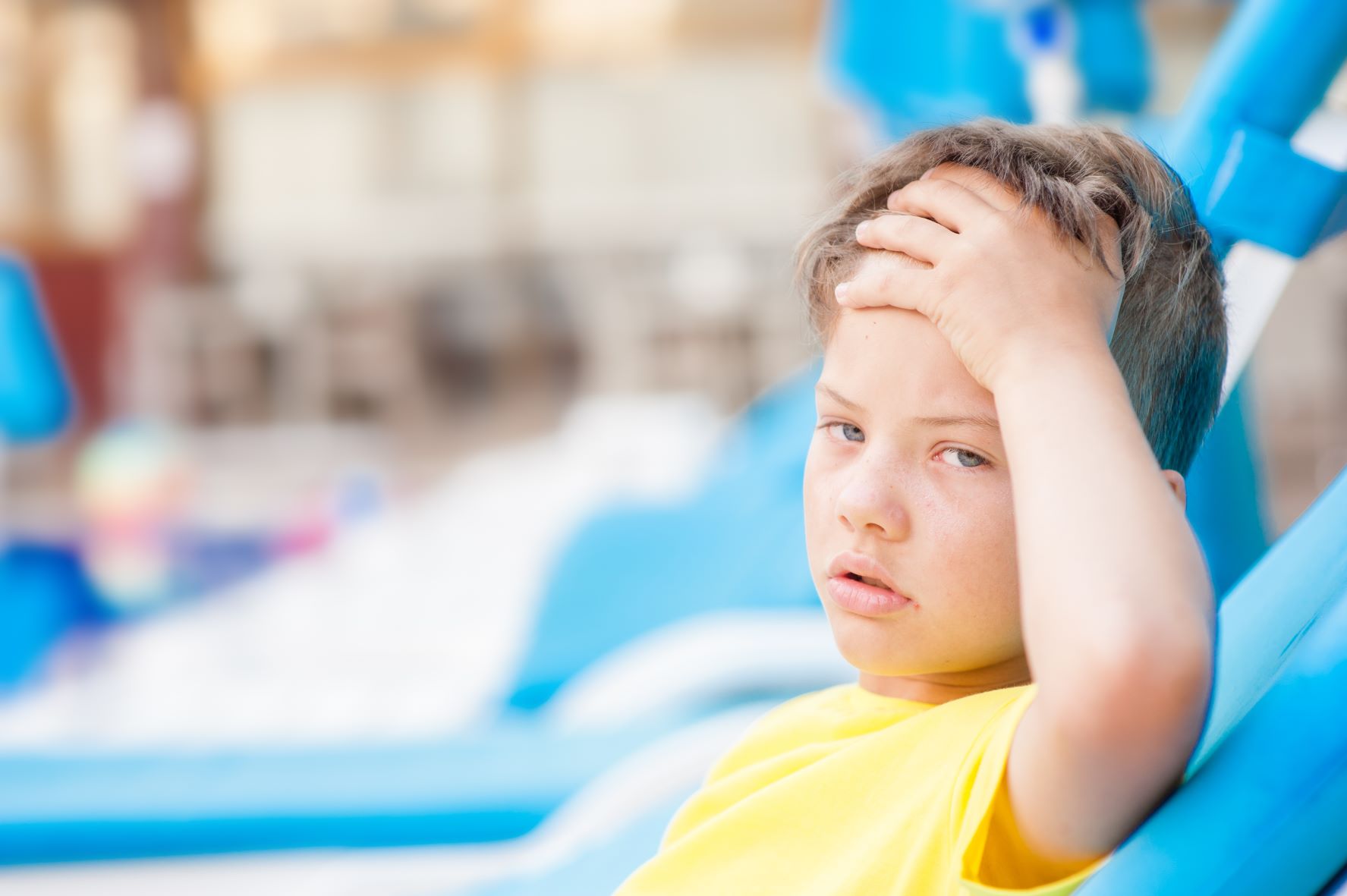
Take heat-related illness seriously — especially in children
Heat-related illness can be dangerous — even life-threatening — for anyone, but children are especially vulnerable. Parents and caregivers should know what to look for with heat-related illness, when to seek medical attention and how to prevent it from happening.
“Children are at particular risk for heat-related illness because of the increased surface area of their body relative to their weight,” said Teresa Riech, MD, emergency physician and medical director of the Emergency Department at OSF HealthCare Children’s Hospital of Illinois. “Children can also be too small to unlock a car door or escape from a hot area, putting them at greater risk.”
Heat-related illnesses range from the relatively mild heat cramps to heat exhaustion and heat stroke.
What to look for
Heat-related illness often start with heat cramps. Symptoms include heavy sweating and muscle cramps or spasms.

“By recognizing heat cramps, parents may be able to prevent progression to more severe stages of heat-related illness,” Dr. Riech said.
Heat exhaustion is more serious than heat cramps. Symptoms of heat exhaustion include:
- Cold and clammy skin
- Dizziness
- Faint, weak pulse
- Headache
- Nausea
- Tiredness
- Passing out
Heat stroke is the most dangerous form of heat-related illness, can quickly become life-threatening and requires emergency medical attention. Symptoms can include those of heat cramps and heat exhaustion, plus:
- Confusion
- Excessive fatigue
- Fast, strong pulse
- High body temperature (103 degrees or above)
- Hot, red, dry skin
- Loss of consciousness
Dr. Riech said children often exhibit symptoms of heat-related illness in different ways than adults. That can include a change in personality or mental status, a significant decline in athletic performance, bright red flushing or complaints of feeling cold or extremely hot.
How to handle
“First aid for suspected heat-related illness should not be delayed,” Dr. Riech said. “Any child exhibiting evidence of heat stroke should be immediately taken to the nearest emergency department, preferably by ambulance.”
Dr. Riech said that heat stroke can quickly become life-threatening, so children receiving medical care need careful monitoring during fluid replacement and recovery.
If either heat exhaustion or heat cramps is suspected, a child should be removed right away from the heat and activity. Parents or caregivers should begin rehydrating and cooling down the child through air-conditioned space or shade, cool water and removing sweat-soaked clothes.
If symptoms do not resolve quickly, parents or caregivers should seek immediate medical attention for the child. It’s important to be aware that medicines to control fever, like Tylenol or Motrin, do not work on heat-related illness and may make matters worse, Dr. Riech said.
Prevention is key
Benjamin Franklin’s maxim, “An ounce of prevention is worth a pound of cure,” sums up the best approach to heat-related illness.
“Prevention is always better than therapy,” Dr. Riech said.
These pointers can help parents keep kids from having heat-related illness and avoid an emergency department visit:
- Take frequent breaks when the heat index is high.
- Schedule events and activities during cooler hours of the day.
- Start to drink fluids BEFORE the activity; if a child starts the activity low on fluids, it’s more difficult to become adequately hydrated during activity.
- Drink often during activity, even if not feeling thirsty. A good rule of thumb: 8-16 ounces of water or appropriate sport drink every 20 minutes of activity.
- Avoid caffeine in beverages. Sugary drinks such as soda should also be avoided. Adults should avoid alcohol.
- Dress your child in light colors, especially in ones that wick sweat from the body.
- Water is usually sufficient to maintain adequate hydration. But for those active in heat for longer periods of time or over multiple days, drinking electrolyte-supplemented beverages such as sports drinks can be even more effective. These can be important in high humidity, when sweat does not evaporate well to cool the body down.
- Slowly and progressively increase time (up to 30 minutes) in the heat over a period of weeks to acclimate the body. This allows the body to sweat faster, cooling the body more efficiently.